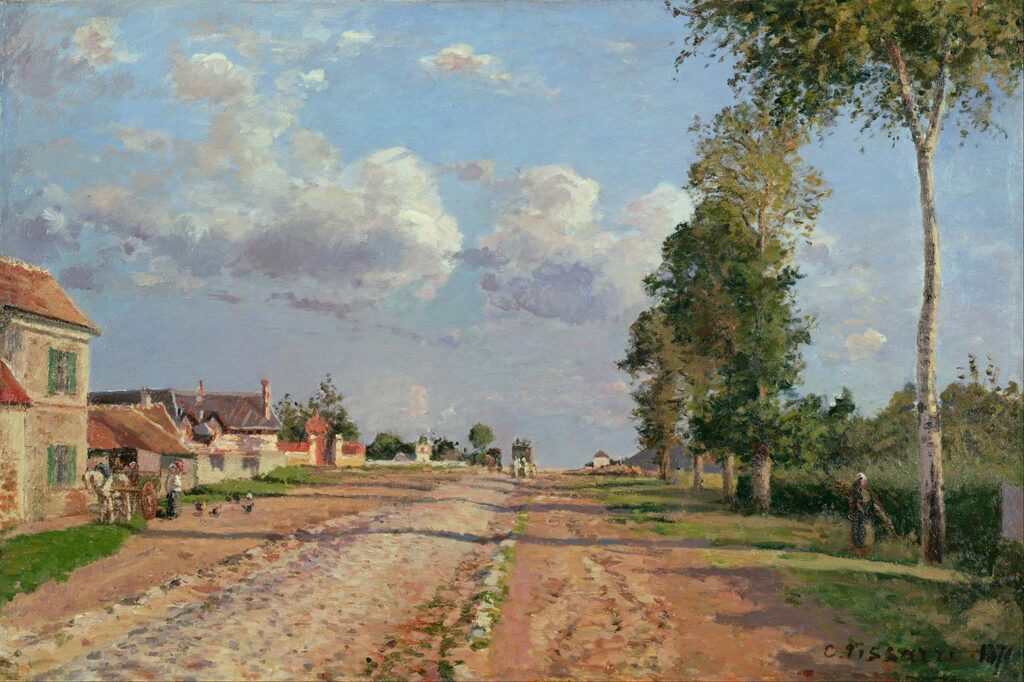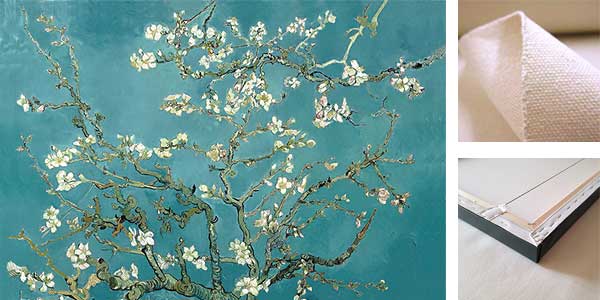
Route de Versailles, Rocquencourt by Camille Pissarro was created in 1871. The painting is in Van Gogh Museum Amsterdam. The size of the work is 51,5 x 76,7 cm and is made of oil on canvas.
Pissarro painted the road to Versailles at the village of Rocquencourt, just outside his home town of Louveciennes. He emphasised the upward slant of the road, making it seem infinitely long. And he used the narrow horizontal shadows of the trees to make it look even wider. In this way, he created the illusion of an enormous expanse.
The painting is a splendid example of Pissarro’s early Impressionism. He tried, for example, to depict the effect of the light striking the road rather than the texture of stones and sand. Look, for example, at the loose, multicoloured brushstrokes and the long blue shadows… Read more in Van Gogh Museum
About the Artist
Jacob Abraham Camille Pissarro (10 July 1830 – 13 November 1903) was a Danish-French Impressionist and Neo-Impressionist painter born on the island of St Thomas (now in the US Virgin Islands, but then in the Danish West Indies). His importance resides in his contributions to both Impressionism and Post-Impressionism. Pissarro studied from great forerunners, including Gustave Courbet and Jean-Baptiste-Camille Corot. He later studied and worked alongside Georges Seurat and Paul Signac when he took on the Neo-Impressionist style at the age of 54.
In 1873 he helped establish a collective society of fifteen aspiring artists, becoming the “pivotal” figure in holding the group together and encouraging the other members. Art historian John Rewald called Pissarro the “dean of the Impressionist painters”, not only because he was the oldest of the group, but also “by virtue of his wisdom and his balanced, kind, and warmhearted personality”. Paul Cézanne said “he was a father for me. A man to consult and a little like the good Lord”, and he was also one of Paul Gauguin’s masters. Pierre-Auguste Renoir referred to his work as “revolutionary”, through his artistic portrayals of the “common man”, as Pissarro insisted on painting individuals in natural settings without “artifice or grandeur”. Read more in Wikipedia
Order a reproduction of this work (printed on canvas)
